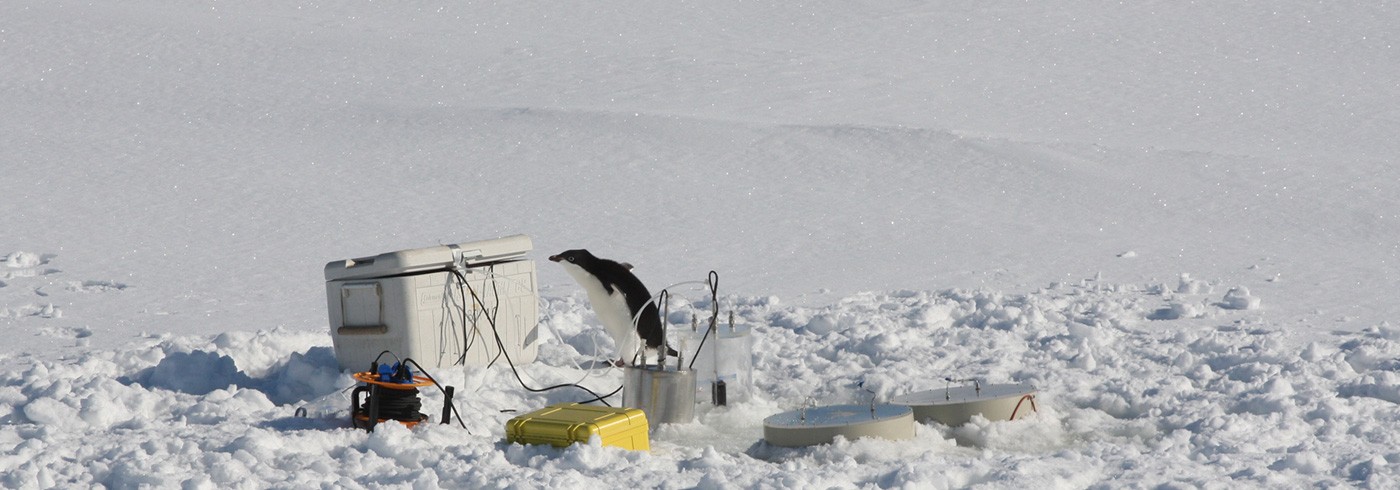Circulation of warm oceanic water and glacier melt water
26 November 2008 - 6 January 2008
Hydrographic section (purple dots in figure 1). (a) Temperature (deg C) (b) Salinity (c) On-shelf velocity (m/s) (blue indicates flow in towards the glaciers). (d) Deviation from the melt-water mixing line (blue outside the white stippled area indicates high melt-water content).
The aim of the project was to study the circulation of warm salty Circumpolar Deep Water (CDW) and the spreading of glacier melt water in the Amundsen Sea area. The West Antarctic ice shelves are vulnerable to melting due to the heat contained in the CDW that crosses the shelf and circulates below the ice shelves (f loating tongues of glacier ice). Recent observations show that the ice shelves are thinning and that the continental ice sheets are flowing faster towards the sea. The low salinity melt water formed by melting glacier ice eventually leaves the shelf and becomes an important ingredient in the freshwater budget of the Southern Ocean, and also influences sea ice formation.
The circulation of the water masses was studied by measuring the salinity, temperature, oxygen content and velocity of the water with instruments that were submerged at each station (CTD and LADCP). In addition to the hydrographic sections we collected information from several yo-yo stations, the results from which are used to analyze the tides in the region.
A hydrographic section showed an inf low of warm, salty CDW in the channel leading to the Western Amundsen Sea Basin, and the Getz and Dotson Ice Shelves. This was the first time such an inflow was measured directly (i.e. with a submerged ADCP). The inf lowing water transported approximately 1.2–2.1 TW of heat towards the glaciers, a quantity that nearly doubles the only existing previous (indirect) estimate, from 2004. Above the warm and salty deep water core lies a 100–200 m thick intermediate water layer that has been cooled and freshened by subsurface melting of ice shelves and icebergs.

